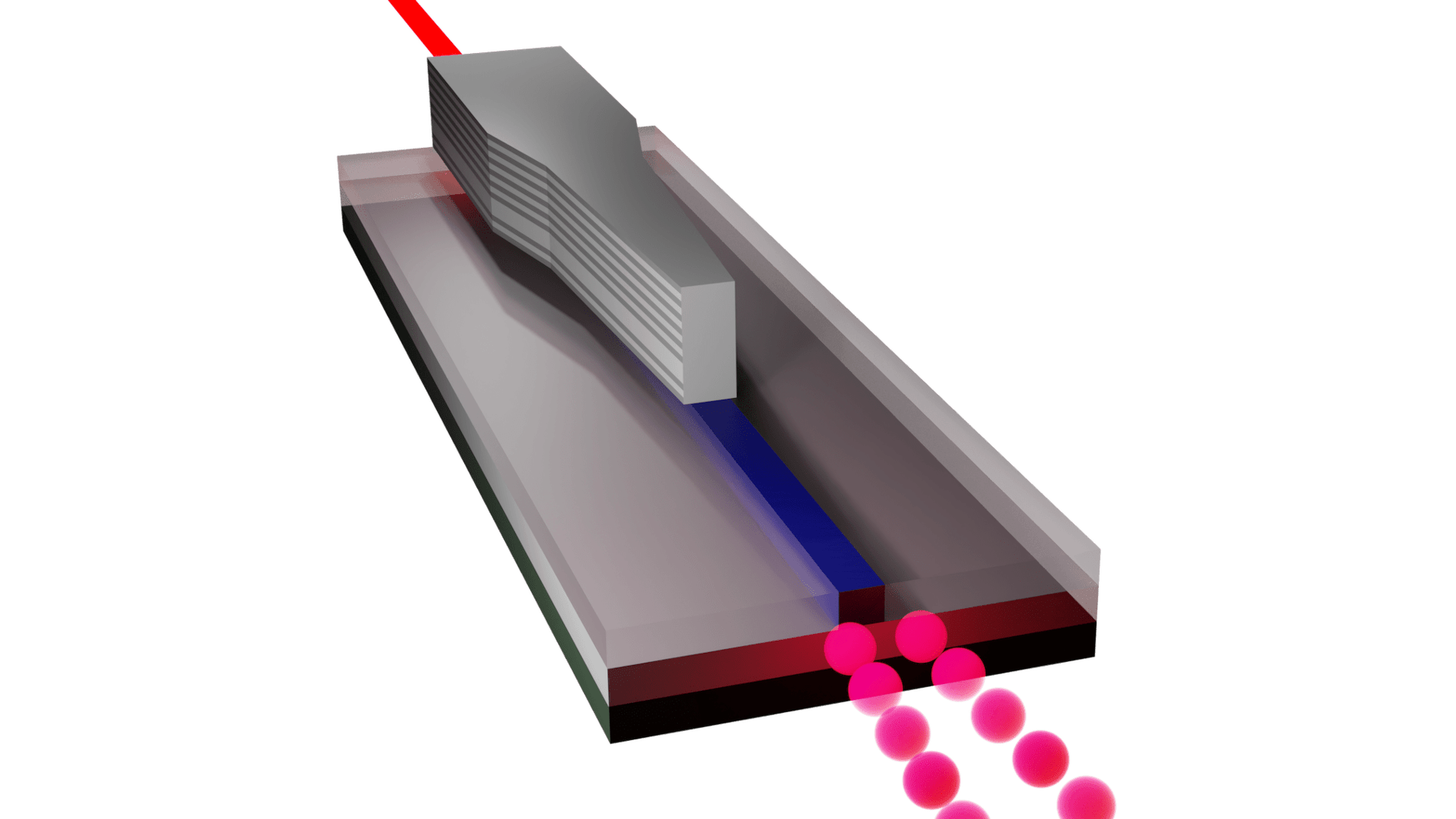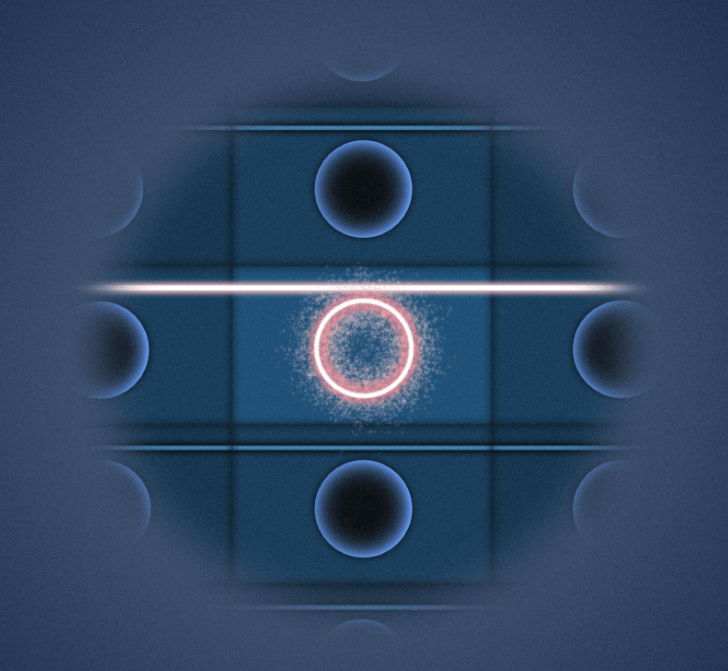The QITE team of MPQ lab, in collaboration with C2N lab, INPHYNI and STMicroelectronics, has just published its work on the development of integrated hybrid sources of entangled photons in PRX Quantum.

Combining the generation and manipulation of quantum states of light on a single chip at room temperature is one of the crucial requirements for the development of scalable and practical quantum information technologies. This work proposes a hybrid solution that integrates two highly complementary semiconductor material platforms on a miniaturized device. This approach leverages the strengths of each material while mitigating their respective limitations, resulting in enhanced functionality.
Specifically, the researchers have utilized the optical properties of AlGaAs, a direct bandgap semiconductor, to produce pairs of entangled photons in the telecom band under excitation by an external laser. Entanglement, a nonclassical correlation at the core of quantum mechanics, is a critical resource for quantum information applications. The generated entangled photons are then transferred to a silicon-on-insulator (SOI) photonic circuit, which is adhesively bonded to the AlGaAs source. This transfer process is designed to transmit only the relevant signal while filtering out the external pump laser. Silicon, being the most mature material platform due to its extensive use in the industry, enables the implementation of complex optical circuits for custom manipulation of light. Therefore, the device produces two-photon quantum states using an active and efficient material such as AlGaAs and transfers them to an SOI circuit while preserving their essential properties for practical applications, i.e. high brightness, large bandwidth, and entanglement quality.
This device opens the way to the implementation of fully on-chip quantum information protocols: while the required manipulation elements are ready to be integrated on the SOI side, the direct bandgap of AlGaAs can be harnessed to integrate the laser pump within the same device, thus enabling compact and standalone quantum photonic circuits for out-of-the-lab implementations of quantum information protocols.
Reference :
Hybrid III-V/Silicon quantum photonic device generating broadband entangled photon pairs
J. Schuhmann, L. Lazzari, A. Lemaître, I. Sagnes, G. Beaudoin, M. Amanti, F. Boeuf, F. Raineri, F. Baboux, S. Ducci
À lire aussi

TUPHO, for large-scale production of integrated photonic circuits
The TUPHO project is an initiative that aims to bridge the gap between upstream innovation and large-scale production in the integrated photonic circuits (PICs) industry. It is led by Hamidreza Neshasteh and Ivan Favero, members of the Light and Mechanics team at MPQ...

On-Chip Ferromagnetic Resonance for van der Waals Heterostructures: Anisotropy and Damping of Cobalt Interfaced with Exfoliated 2D Materials
A collaboration between the technical hub, the clean room platform and the TELEM group at MPQ laboratory has developped a new experiment demonstrating that standard broadband ferromagnetic resonance can still be effective to probe the magnetization dynamics of “thin...

Materials science – When the surface reaches deep inside…
Crystalline surfaces often exhibit reconstructions, usually assumed to affect only a few atomic layers below the surface. A collaborative study (conducted by the Matériaux et Phénomènes Quantiqueslaboratory in Paris, the Institut P’ in Poitiers, and the SixS beamline...

Exhibition – Matériaux et phénomènes illustrés
General public exhibition, free access. At the MPQ laboratory, electronic and photonic chips are designed and manufactured for use in both fundamental research and industrial applications, such as quantum telecommunications and high-precision mechanical sensors.The...
